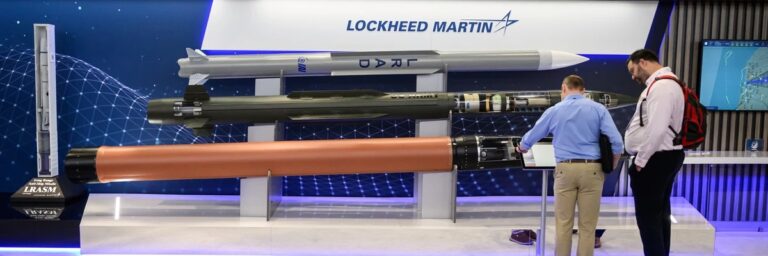“The order books of the world’s biggest defense companies are near record highs,” a new Financial Times analysis reveals.
by Brett Wilkins for Common Dreams
Orders at many of the world’s biggest arms companies are “near record highs” due to rising geopolitical tensions in recent years, an analysis published Wednesday by Financial Times revealed.
The London-based newspaper analyzed the order books of the world’s 15 top arms makers and found their combined backlogs were $777.6 billion at the end of 2022—a 10% increase from 2020.
According to FT:
The trend’s momentum continued into 2023. In the first six months of this year—the latest comprehensive quarterly data available—combined backlogs at these companies stood at $764 billion, swelling their future pipeline of work as governments kept placing orders.
The sustained spending has spurred investors’ interest in the sector. [Member of Chartered Institute for Securities & Investment’s] global benchmark for the industry’s stocks is up 25% over the past 12 months. Europe’s Stoxx aerospace and defense stocks index has risen by more than 50% over the same period.
Private equity firms including BlackRock, Vanguard, Capital Group, and State Street are dominant or major shareholders in most of the weapons companies analyzed by FT. These Wall Street speculators are “the ones driving the perpetual wars to maintain their bankrupt financial system,” according to the International Schiller Institute, a Washington, D.C.-based think tank.
“In the U.S., the defense budget was $858 billion in 2023, and it is rapidly heading towards $1 trillion per year,” the institute said last week. “Meanwhile our highways and railroads, our bridges and tunnels, our hospitals and schools are crumbling. And the rest of the world also desperately needs American technology and capital goods to help their development, working with China and Russia, rather than driving the planet towards World War III against them.”
Who owns the Military Industrial Complex?
— Hussein Askary (@HusseinAskary) December 27, 2023
Factsheet from the @SchillerInst on financial firms that own the military industries in the U.S., and how much civilian economic projects can be otherwise built for the same resources spent on war!https://t.co/Jnj3B3pG1K pic.twitter.com/XjQF4Hajij
The West’s scramble to arm Ukraine’s homeland defense against ongoing Russian invasion and occupation played a significant role in surging arms orders.
For example, Hanwha Aerospace, South Korea’s largest weapons manufacturer, recorded the biggest increase in new orders—FT says its backlog soared from $2.4 billion in 2020 to $15.2 billion at the end of last year—largely due to sales of K-9 self-propelled howitzers to countries supplying arms to Ukraine.
Rheinmetall, a German firm that makes Panther main battle tanks, nearly doubled its backlog from $14.8 billion to $27.9 billion, also in large part because of Ukraine-related sales.
However, many of the company’s swollen backlogs predate the Ukraine war, which began in February 2022.
“The reality is lead times for policymaking, budgets, and placing orders are so long that the invasion of almost two years ago is only just appearing in orders and barely in revenues, except for a few shorter-cycle specialists such as Rheinmetall,” Nick Cunningham, an analyst at the insurance firm Agency Partners, told FT.
Israel’s assault on Gaza—which began in October and is already one of the most devastating in modern history, with an average of 1,000 bombs dropped daily on the densely populated strip—is not included in FT’s analysis, but is a boon to arms-makers and a large part of the reason why last year’s record backlogs are expected to reach new heights in 2023 and beyond.
As Common Dreams reported earlier this year, global military spending rose to an all-time high of over $2.2 trillion last year, according to the Stockholm International Peace Research Institute.
Visitors look at the BARAK (top), PAC-3 MSE (middle), and THAAD (bottom) missiles from Lockheed Martin on day one of the Defence and Security Equipment International (DSEI) fair at ExCel on September 12, 2023 in London.
(Photo: Leon Neal/Getty Images)


